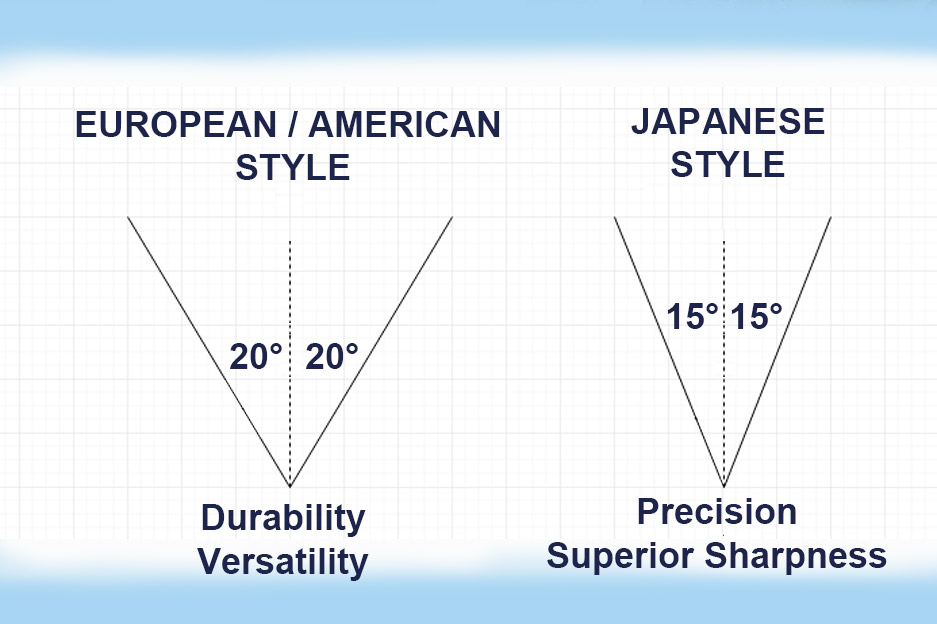Go  | New  | Find  | Notify  | Tools  | Reply  |  |
| Green grass and high tides |
I realize that this should probably go in the essential edge section. But more will see it here. I have found this to be a pretty simple and effective way to sharpen knifes to get very sharp. Use the hone or steel rod. Hold it handle up with the tip on a solid table type surface. As the video says hold the knife at an angle about the width of a match book. Use hard strokes initially then light ones to finish. It may take 20 to 30 strokes total per side. I find Six then switch sides. Then four and then three. But it takes as much as you care to do to get the edge where you want it. You can do kitchen, working or defensive knives. I sharpened 5 knives in 30 mins. and they got sharp. I have a Ken Onion knife sharp but have little use for it using this method. I hope you find it as simple and effect as I do. https://www.youtube.com/watch?v=EKYPCxx20zg Happy Thanksgiving. "Practice like you want to play in the game" | ||
|
| Partial dichotomy |
| |||
|
Fighting the good fight |
I'm very surprised he's advocating for honing at a 12-15 degree angle, on a Western chef's knife. The profile of Japanese kitchen knives tends to be 10-15 degrees, so that angle would be appropriate for those. But Western kitchen knives tend to be more like 20 or even 25 degrees. If you try to hone a 20-25 degree blade at 12 degrees, your steel is not even going to be making contact with the cutting edge, but rather just scraping along the back corner of the bevel. An easy way to eyeball either one - and get in the ballpark - is by halving angles. Hold the blade perpendicular to the steel. That's 90 degrees. Halve that angle by eye. That's about 45 degrees. Halve it again. That's around 22.5 degrees, which gets you close enough for most Western knives. Halve that, and you're at about 11.25 degrees, which gets you in the ballpark for Japanese knives. I also prefer ceramic rods over steel. | |||
|
| Savor the limelight |
The video’s sponsor, Zwilling J.A. Henckles, had this to say in the description: "This method and angle is ideal for both Japanese and German knives including all Zwilling cutlery. Keeping your knives razor sharp is easy. Zwilling is proud to partner with "The Master of the Blade" -- Bob Kramer.” A quick check of the interwebs says their knives are mostly 30 degrees with a few at 25 degrees, so 15-12 degrees would be right in there. I wish our kitchen knives weren’t abused such that a sharpening steel would be all that’s needed. I usually have to start with a belt sander. | |||
|
Fighting the good fight |
I think you're misunderstanding. If you have a 20 degree blade angle, the bevel is not 10 degrees per side, adding up to 20 degrees total... It's 20 degrees each side. And you should be honing or sharpening each side at 20 degrees.  Edit: Ah, I see what you Googled. "Total blade angle" is not normally how blade angles are discussed, but I see now what you mean. Here's the very first Google result for "Henckels blade angle": "The blade-edge angle for all Zwilling J.A. Henckels cutlery, with the exception of santoku knives, is 15 degrees on each side (30 degrees total). The blade-edge angle for santoku knives is 10 degrees on each side (20 degrees total)." Importantly, this means Henckels apparently uses narrower Japanese-style angles on all their knives, even their Western kitchen knives, which isn't the norm. So it makes sense why he would be recommending 12-15 degrees in this Henckels-specific video, since even their Western style knives have Japanese-style angles. But folks should understand that the average Western chef's knife should not be honed/sharpened at 12-15 degrees... That's too shallow of an angle, and won't do much of anything for the edge. If you're struggling to get results when honing your (non-Henckels) Western style kitchen knives, that would be why. Try at the more typical 20 degree angle instead. | |||
|
| Staring back from the abyss |
I just keep a few of these Lansky QuadSharps around. They work better than a honing steel for me and are quick and easy.  ________________________________________________________ "Great danger lies in the notion that we can reason with evil." Doug Patton. | |||
|
Frangas non Flectes |
, so one man sharpens another. Interesting discussion. I keep and use a kitchen steel, but I mostly use it in a honing capacity. It’s worked well enough for that, but I’ll try this out when I next get my chef’s knife duller than I’ll tolerate. ______________________________________________ "If the truth shall kill them, let them die.” Endeavoring to master the subtle art of the grapefruit spoon. | |||
|
Member |
To the OP, I saw a method something similar from Alton Brown, been using it since. The Enemy's gate is down. | |||
|
| Green grass and high tides |
Yea just adjust the angle a bit based on the blade. One of my fillet knives did not sharpen as well. Went with a narrow angle and it sharpened up great. Those carbide sharpeners work ok. But do not get a blade razor sharp at least for me. "Practice like you want to play in the game" | |||
|
| Get my pies outta the oven!  |
Just so you know, a knife steel is not really sharpening the blade. It’s actually straightening it back out. If the blade is dull, it’s not going to do much for it. I use a water stone on all my knives then finish with the steel then use the steel periodically until I need to sharpen again. | |||
|
| Green grass and high tides |
did you watch the vid PA? "Practice like you want to play in the game" | |||
|
| Member |
I'm lousy at using a honing steel. If you can't consistently hold the knife at the correct angle with each stroke I don't think you are going to achieve a sharp knife. To hold the knife at the correct angle free hand is an impossibility for me. I got this Brod And Taylor honing tool a few years ago and it has worked excellent at keeping my blades sharp. It's a black Friday deal right now as well. I highly recommend it. "Fixed fortifications are monuments to mans stupidity" - George S. Patton | |||
|
| Savor the limelight |
There are neat pictures of the damage one of those pull through carbide sharpeners does to S110V at this link: Electron Microscope - scienceofsharp.com. About 1/4 of the way down the page. Good thing our kitchen knives aren’t super steel. There’s a lot of other pictures and articles. Some post stropping pictures are amazing. | |||
|
Member |
What honing does is actually straighten out the micro edge of the blade.  The ‘ribed’ steels might take a little of the edge off, but the smooth steels just adjust any turned edges back into true to give the blade a truer line. ———- Do not meddle in the affairs of wizards, for thou art crunchy and taste good with catsup. | |||
|
| Green grass and high tides |
all I can attest to is my knives were not overly dull or damaged and with a few minutes on my round hone or steel my blades are sharp. Cut paper clean sharp. "Practice like you want to play in the game" | |||
|
Fighting the good fight |
Yep. All knives will eventually need to be resharpened, but most knives that are starting to feel a little dull just need to be honed (their edge straightened) rather than being sharpened (removing metal to form a new edge). You can hone a quality knife back to sharpness many times between actual resharpenings. I typically go a year or two between needing to resharpen my Wusthof kitchen knives, but they get honed regularly. YMMV, though. There are other factors, like the type and quality of steel used, the amount of use, the material of your cutting surface, whether you hand wash your knives or put them in the dishwasher, etc. | |||
|
| Staring back from the abyss |
I'm not a purist. I, frankly, don't really care what my edges look like under an electron microscope. A knife, to me, is just a tool that I keep "sharp" by whatever means work well for me and allows me to use the tool well. For example, I could take my Leatherman and sharpen it with a sanding belt to the point where it'll shave the hair on my arm with ease. Does it matter to me that the edge looks like it was beaten against a rock under that electron microscope? Nope. It does what I need it to do and it does it well...until it doesn't. Then, I'll sharpen it again. ________________________________________________________ "Great danger lies in the notion that we can reason with evil." Doug Patton. | |||
|
| Savor the limelight |
The guy with the electron microscope has this to say about that: "It is a common misconception that steeling does not remove metal, but simply “re-aligns the edge.” I have shown that re-alignment is one of the four results of stropping in What Does Stropping Do? However, in my experience this type of re-alignment rarely occurs. In the vast majority of cases, the steel near the apex is too damaged to be straightened, and instead simply breaks away rather than realign." What Does Steeling Do? Part 1 He tests a variety of honing rods and even the steel ones remove metal from the knife's edge. | |||
|
| Powered by Social Strata |
| Please Wait. Your request is being processed... |
|
© SIGforum 2025
